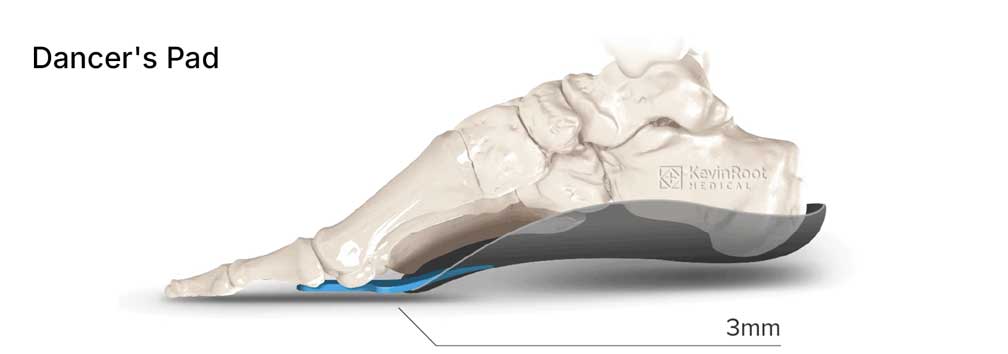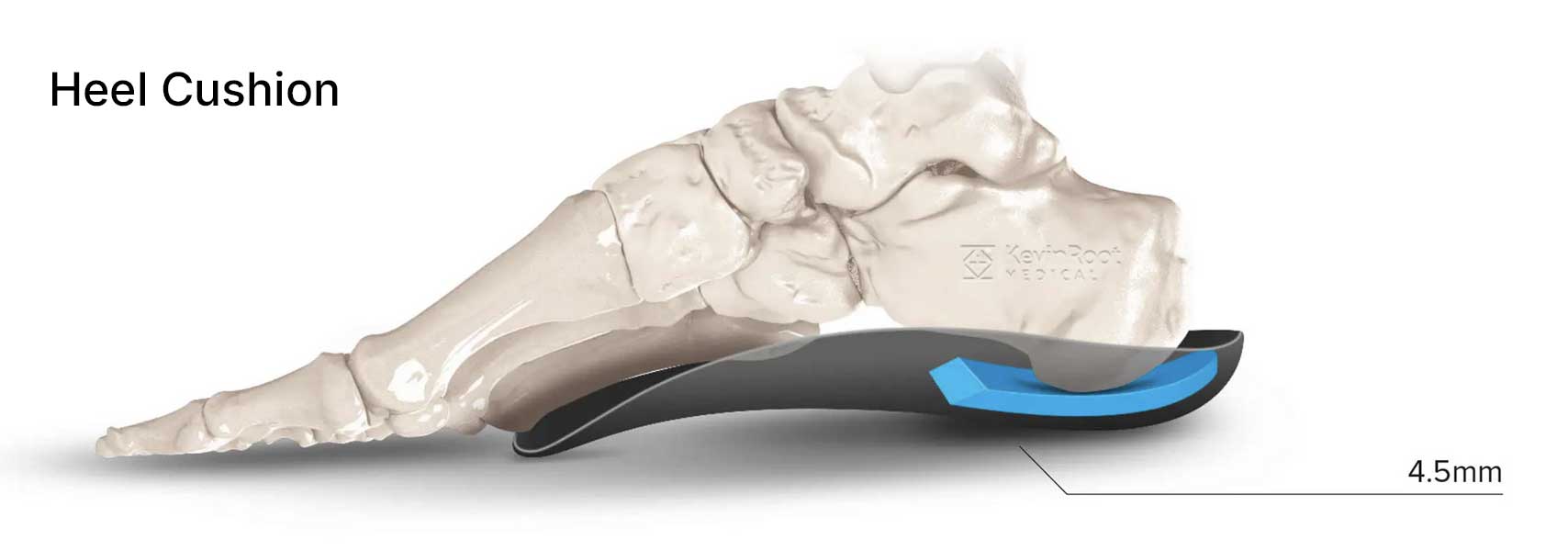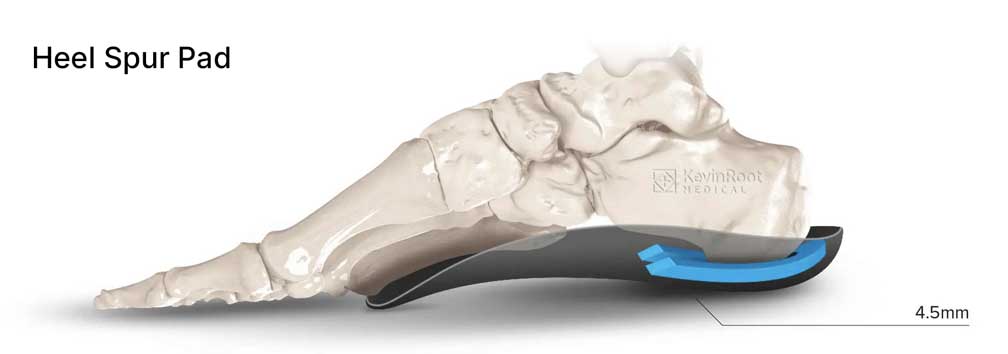Functional custom foot orthotic devices are biomechanics based in nature and are intended to correct the deforming forces that create lower extremity symptomatology. This function is performed the the utilization of fairly rigid frame materials, rearfoot and forefoot posts, as well as extensions as a total shoe insole replacement. Now we will discuss the various “bells and whistles” available to treat very specific foot conditions that frequently manifest themselves as pain and disability. Many of the pads and cushions that we routinely use have passed the test of time, and are familiar to old school foot doctors, as well as athletic trainers, physical therapists, chiropractors, and anyone else who deals with alleviating day to day foot pain conditions. The proper usage of these simple remedies is as much art as it is science. Similar to other learned skills, ongoing practice leads to greater competence. A well designed foot or toe pad, splint, or cushion can enhance a surgical result, keep a worker working or a player playing, create comfort or prevent worsening of a condition. It can also turn a good orthotic device into a great one.
“Pad and Cushions” is the sixth column within the Configurator of the FootID Pro app. Many of these options are available bilaterally, or you can select the chainlink icon within the particular field and then designate either left or right if you prefer the addition to only one of the orthotic devices and not the other. The first field in this section is the “Carlton Saddle”. A Carlton saddle is Myolite padding that runs from tuberosity of the Calcaneus to the heads of the metatarsal bones. It extends from the plantar distal end of where the Calcaneus sits in the shell, to the proximal metatarsal heads. This pad supports the plantar fascia and the longitudinal arch. Because the distal edge functions as a metatarsal bar and the proximal end functions as a negative heel pad, it also aids in plantar aponeurosis pathology. The goal of the Carlton Saddle is to offload the heel and ball of the foot and transfer more weight bearing force to the midfoot. It is available in various thicknesses.
The next field in this section is “Cuboid Pad”. A Cuboid offload pad is a rectangular-shaped Myolite padding that is placed on the superior lateral surface of an orthotic’s frame and sits beneath the distal Calcaneus, proximal to the Cuboid. However, I always preferred to place Cuboid pads directly under the Cuboid bone. The advent of lightweight, flexible shoes, especially with the presence of the “foot bridge” or scalloped out midsole at the level of the midfoot, created an inherent weakness in the shoe that promotes a flexion and/or a torsion of the foot, as the heel is raising off the ground during propulsion. Additionally the Peroneus Longus tendon may cause a rotation of the Cuboid as it pulls distally and then medially as it changes course beneath the Cuboid towards its insertion on the medial aspect of the foot. Pain and possible subluxation at either the Calcaneal-Cuboid joint, or the Cuboid-4th and 5th metatarsal base joints may result. The rigidity of the orthotic frame with a well placed Cuboid pad often prevents this from happening
The “Dancer’s Pad” is a commonly used pad and is very familiar to those in the ballet and ballroom dancing worlds. A dancer’s pad is Myolite padding added to the superior midfoot and forefoot of the orthotic. It begins at the midfoot, proximal to the 1st metatarsal base and distal to the 5th metatarsal styloid process, and extends to the distal edge of the frame, where it continues beneath the 2nd, 3rd, 4th and 5th metatarsal heads, but terminates proximal to the sesamoids and 1st metatarsal head. The distal edge of the pad is left unskived. A 1st ray cut out modification may be used to accompany this padding if increased flexibility and less frame interference with the sesamoids is desired. It is used to offload painful or hypertrophic sesamoids, or to relieve painful skin or other soft tissue lesions under the 1st metatarsal head. It is available in various thicknesses.

The next two options under this category are “Heel Pad” and “Heel Spur Pad”. A heel pad or cushion is a Myolite padding on the superior surface of an orthotic’s entire heel cup area and terminates just distal to the calcaneal tubercles. Its edges extend superiorly up the medial, lateral and posterior heel cup walls and are skived and blended along all of its borders. Its padding is thickest where the plantar calcaneal tuberosity sits. A heel spur pad is a horseshoe-shaped Myolite padding on the superior surface of an orthotic’s heel cup area and terminates just distal to the calcaneal tubercles. It possesses a parabolic wedge cutout of its padding that borders the plantar calcaneal tuberosity. Its outer edges are blended into the heel cup walls, but the inside edges along the parabolic cutout remains unskived. Both pads are available in four thicknesses from 1.5 mm to 6 mm. Both of these pads have indications that are similar, and the practitioner should exercise their own preference in deciding which one to use. These pads differ from the “Heel Aperture” which is discussed elsewhere in this series. Heel pads can also be used in lieu or in addition to heel lifts in certain cases.


Many of the pads and cushions discussed may be used separately from an orthotic device. Some are available commercially as pre-cut pads and cushions, usually made from adhesive backed dense felt or foam, or visco-elastic polymer or silicone. Effective use of these types of pads can lead to very satisfied patients, and offer simple and inexpensive remedies to often painful and debilitating foot conditions.






